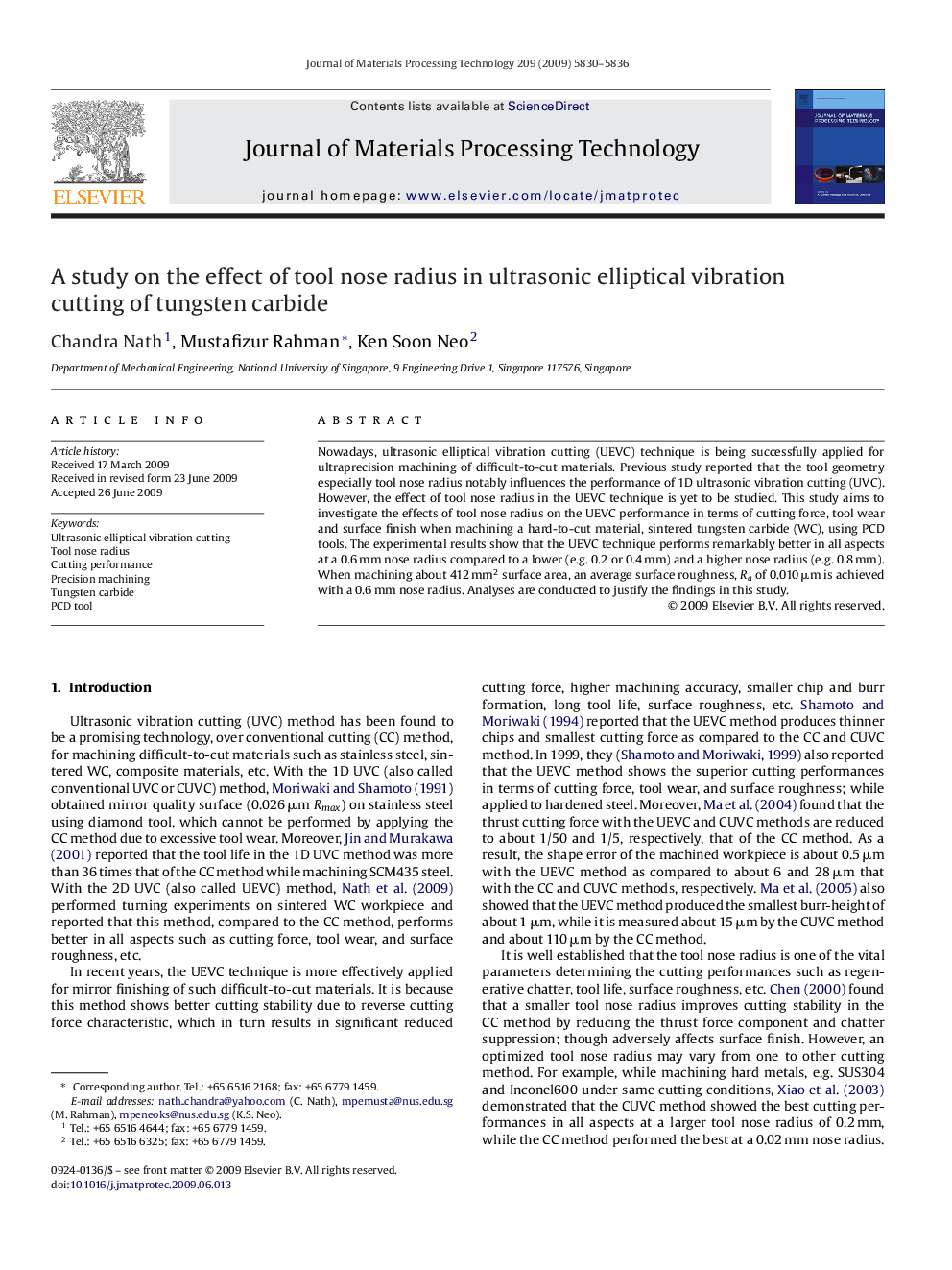| Article ID | Journal | Published Year | Pages | File Type |
|---|---|---|---|---|
| 793273 | Journal of Materials Processing Technology | 2009 | 7 Pages |
Nowadays, ultrasonic elliptical vibration cutting (UEVC) technique is being successfully applied for ultraprecision machining of difficult-to-cut materials. Previous study reported that the tool geometry especially tool nose radius notably influences the performance of 1D ultrasonic vibration cutting (UVC). However, the effect of tool nose radius in the UEVC technique is yet to be studied. This study aims to investigate the effects of tool nose radius on the UEVC performance in terms of cutting force, tool wear and surface finish when machining a hard-to-cut material, sintered tungsten carbide (WC), using PCD tools. The experimental results show that the UEVC technique performs remarkably better in all aspects at a 0.6 mm nose radius compared to a lower (e.g. 0.2 or 0.4 mm) and a higher nose radius (e.g. 0.8 mm). When machining about 412 mm2 surface area, an average surface roughness, Ra of 0.010 μm is achieved with a 0.6 mm nose radius. Analyses are conducted to justify the findings in this study.
